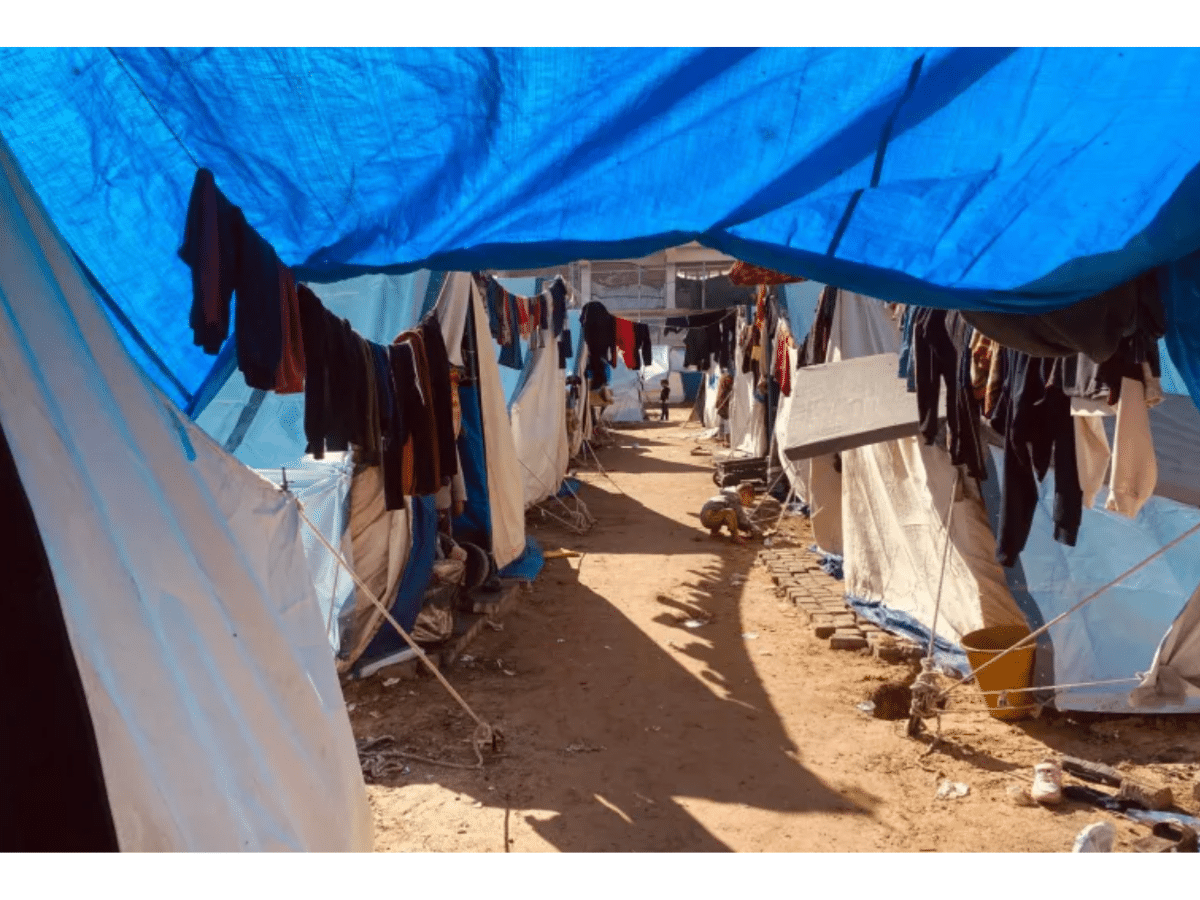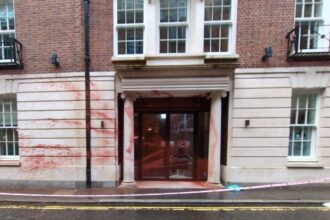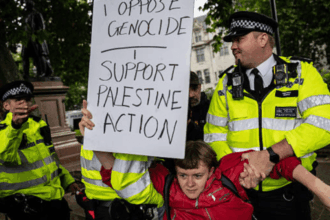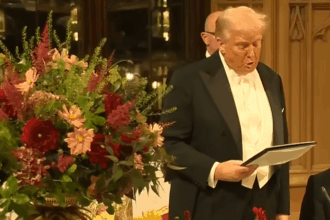Small tents dot the outskirts of Gaza, a city no longer recognisable, disfigured by two years of genocidal violence by Israel. Arranged in rows and clusters, they stand definantly, mirroring the unbreakable resolve of Gazans. It’s all that the remains of life. Statistics shared by Al Jazeera Arabic from the Government Media office in Gaza, suggest that the overall cost of urban destruction exceeds USD 60 billion, almost half of it sustained by homes that vanished from Gaza’s skyline. Still, life, much to Israel’s dismay, continues.
As ever, the community in Gaza is showing the world that even with the smallest thread can bind society together. Each tent holds a unique story. A mother prepares food over a low flame, boiling water, a grandmother dusts off a photograph that survived the rubble, and a small child builds a house from broken stones.
Resistance: in Gaza we teach life
The tent might be the separating line between survival and annihilation. However, inside, small communities form, multiply, and thrive, rejoicing their second chance at life. As one father told the Canary:
The tent doesn’t protect us from the rain, but it reminds us we are still here, and as long as we are here, life is not over.
In Gaza, surviving each day is a form of resistance. Every step is a declaration of defiance, and every meal cooked with makeshift utensils is no small feat in the face of genocide. Homes may have disappeared but one thing Israel cannot take away is the indomitable spirit of Palestinians and their ability to organise.
They have transformed multipurpose tents into makeshift schools and medical centres and carved out spaces for learning, worship, and leisurely activities.
Behind the canvas walls of one of these makeshift schools, a teacher tells the Canary that:
you cannot erase our right to education as our homes were, we refuse he signals at a salvaged blackboard, bearing the scars of war, propped against the tent wall.
When a tent becomes a school, resistance becomes a lesson in survival and, not least — a dignified expression of Palestinian resistance.
Historical deja vu
The multiplication of tents in Gaza is reminiscent of the aftermath of the 1948 Nakba, the mass displacement of Palestinians expelled and ethnically cleansed by Israeli settlers and militia. The landscape is reminiscent of the 1950s, as if Palestinian history is trapped in a painful cycle that has come full circle. Even in the face of continued violence from genocidal Israeli forces, Palestinian resolve remains unbroken.
From the mass expulsion of Palestinians from their indigenous lands in the late forties, to the new encampments in Gaza, these stories run parallel, separated by decades but bound by similar hardships and determination.
The tents erected today remind Palestinians of the hardships thousands before them endured both during the Nakba, and later the 1967 Naksa. They are a testament to Palestinian survival in the face of genocidal erasure, and serve as an ode to the past.
It keeps the memory or the past alive and fuels resilience for future generations to come.
Life endures
“Tents guard what remains of life in Gaza” is a phrase widely echoed among residents. It is a statement of will — the ability to survive the cruel aftermath of genocide.
When people share their last loaf of bread or open their tents to neighbours who lost everything, life is stripped back to its basic elements. The basic values of solidarity, compassion and humanity get people through the day in spite of the material and human loss Palestinians have endured — past and present.
The tents are not an end, but a new beginning. All we lost was material, but what remains is meaning.
Between the rubble and the sky, a fragile yet resilient life is starting to take shape. Even when the wind topples a tent, its inhabitants return to rebuild it. When the rain soaks through, the children smile, with water signifying the coming harvest. In Gaza, even a storm is interpreted as a good omen. Beneath these cruel realities, life endures.
Life is not measured by the passage of time but the ability to emerge from the ashes and rebuild anew. Though it appears fragile, the tent stands stronger, more defiant than reinforced concrete structure, sustained by the unshakable will of Palestinians.
Gazans today do not await pity from international onlookers or pundits. They teach a unique lesson that even under occupation or under siege, life is a act of quiet heroism.
Featured image via the Canary













